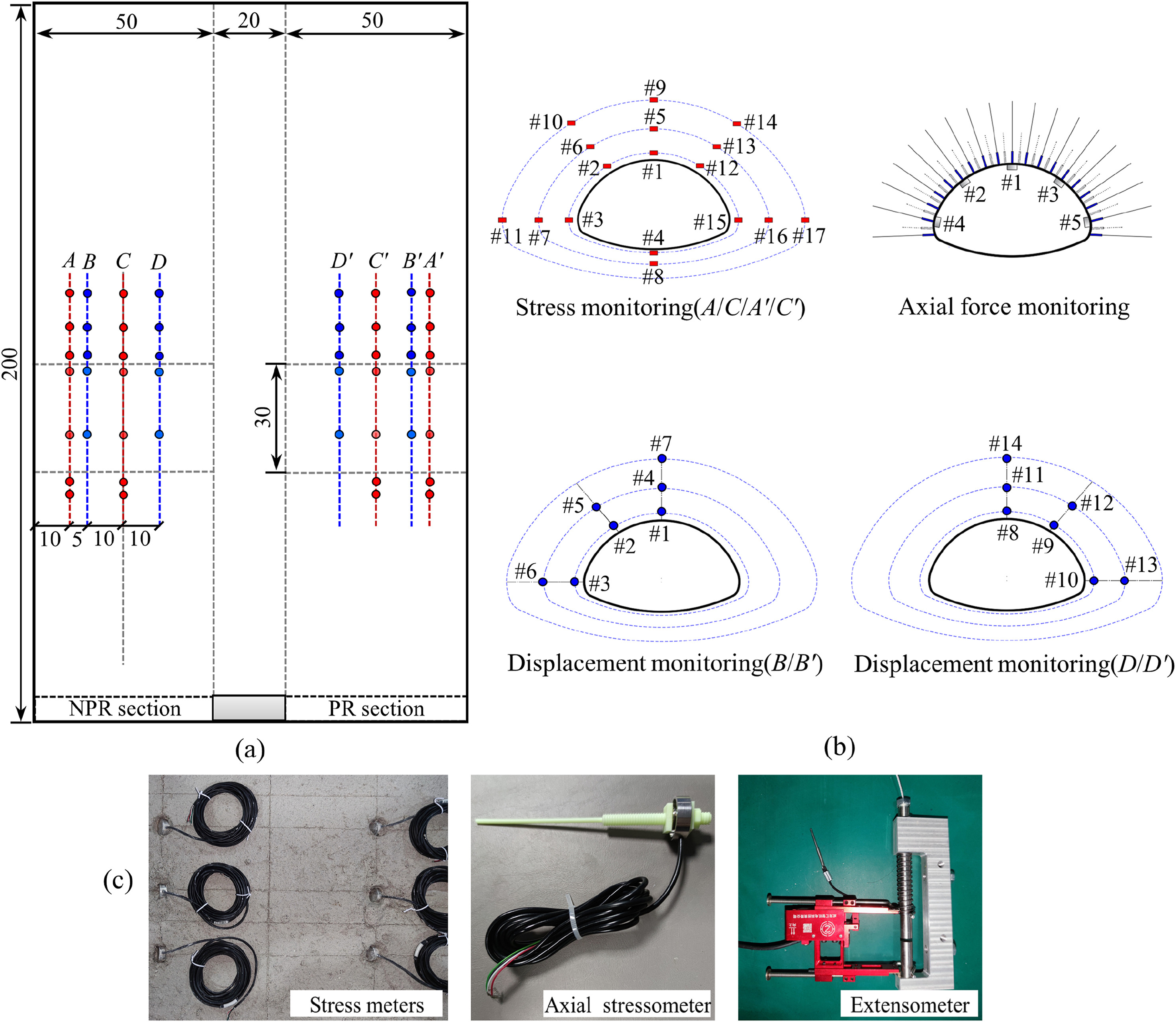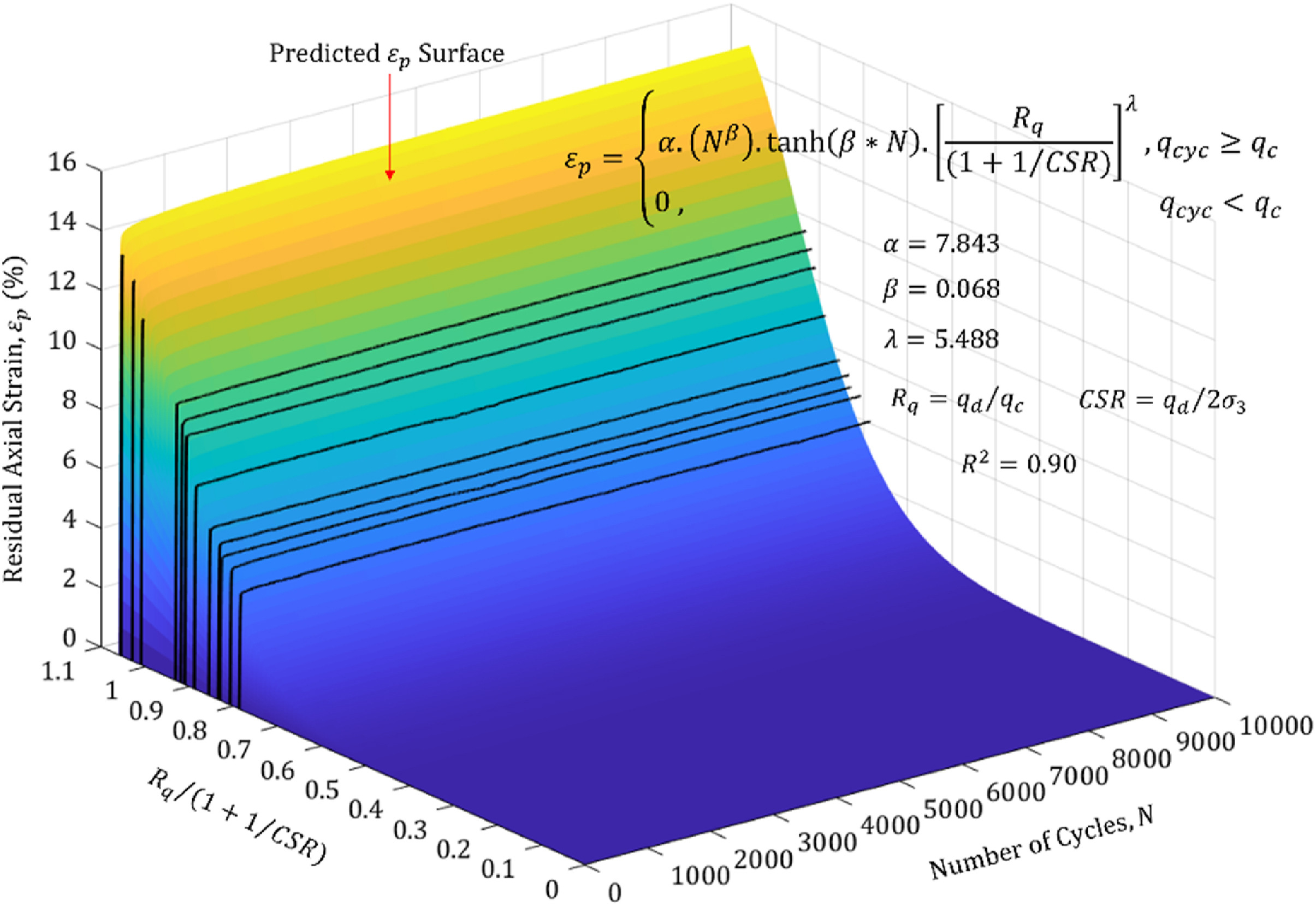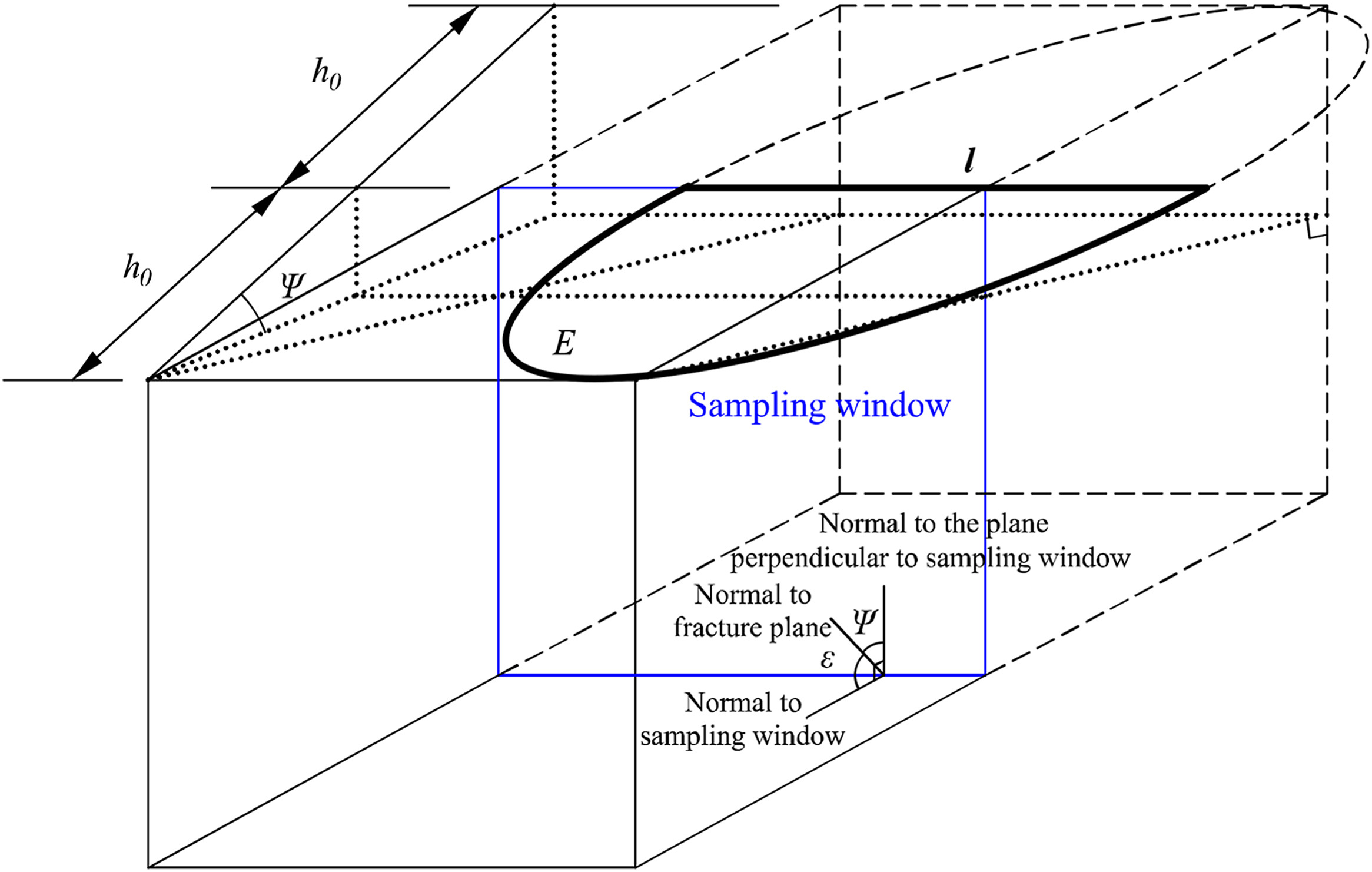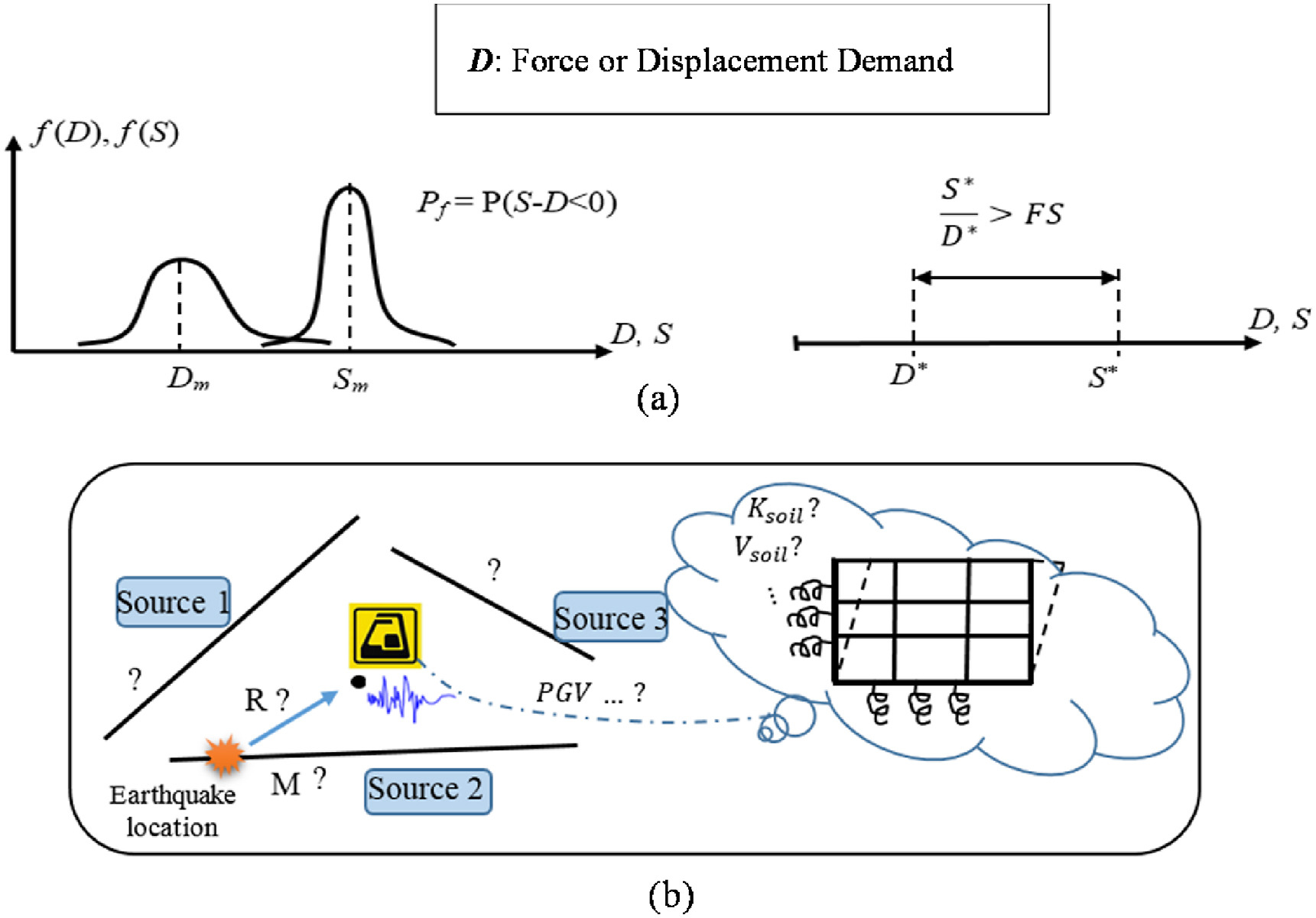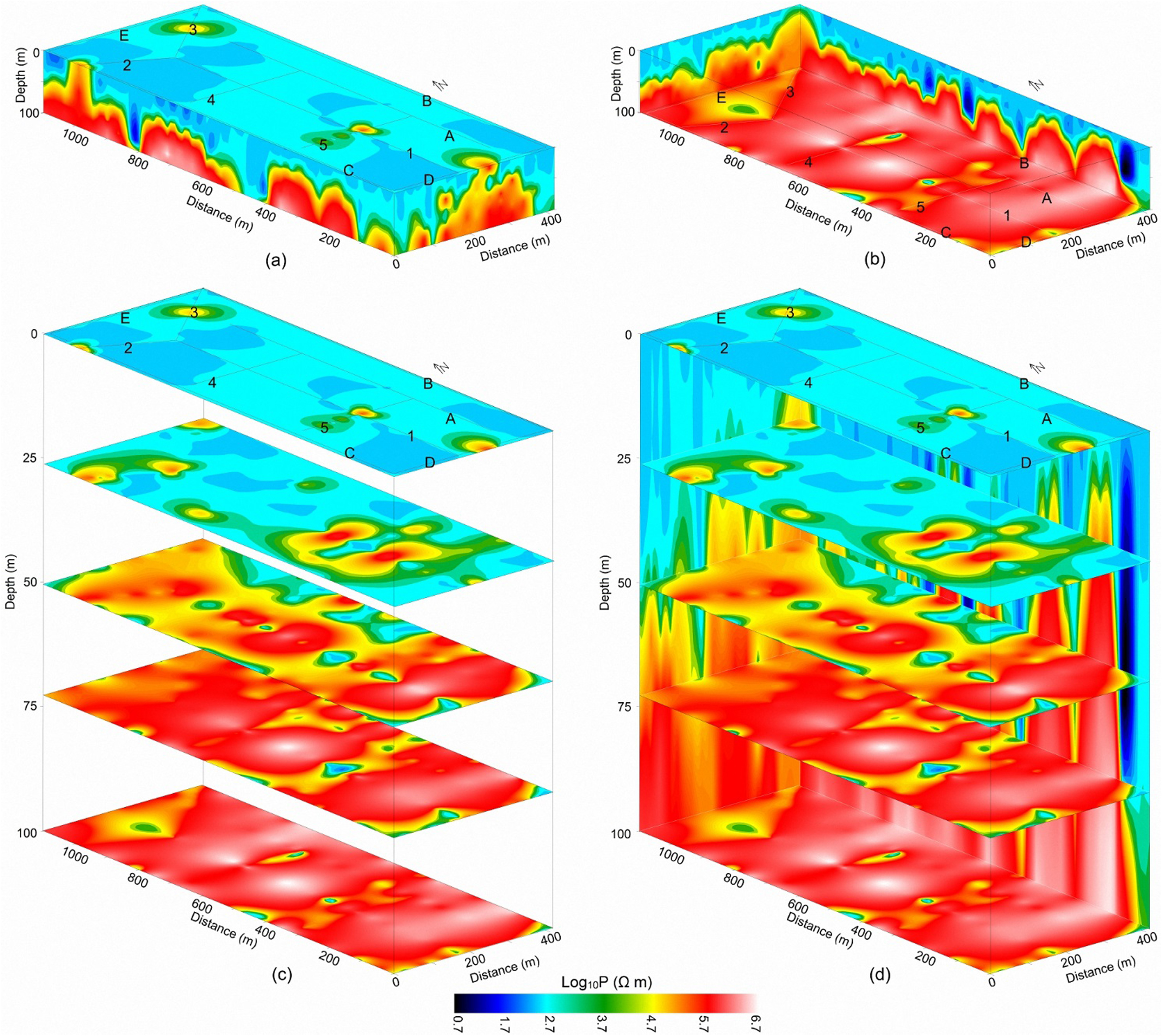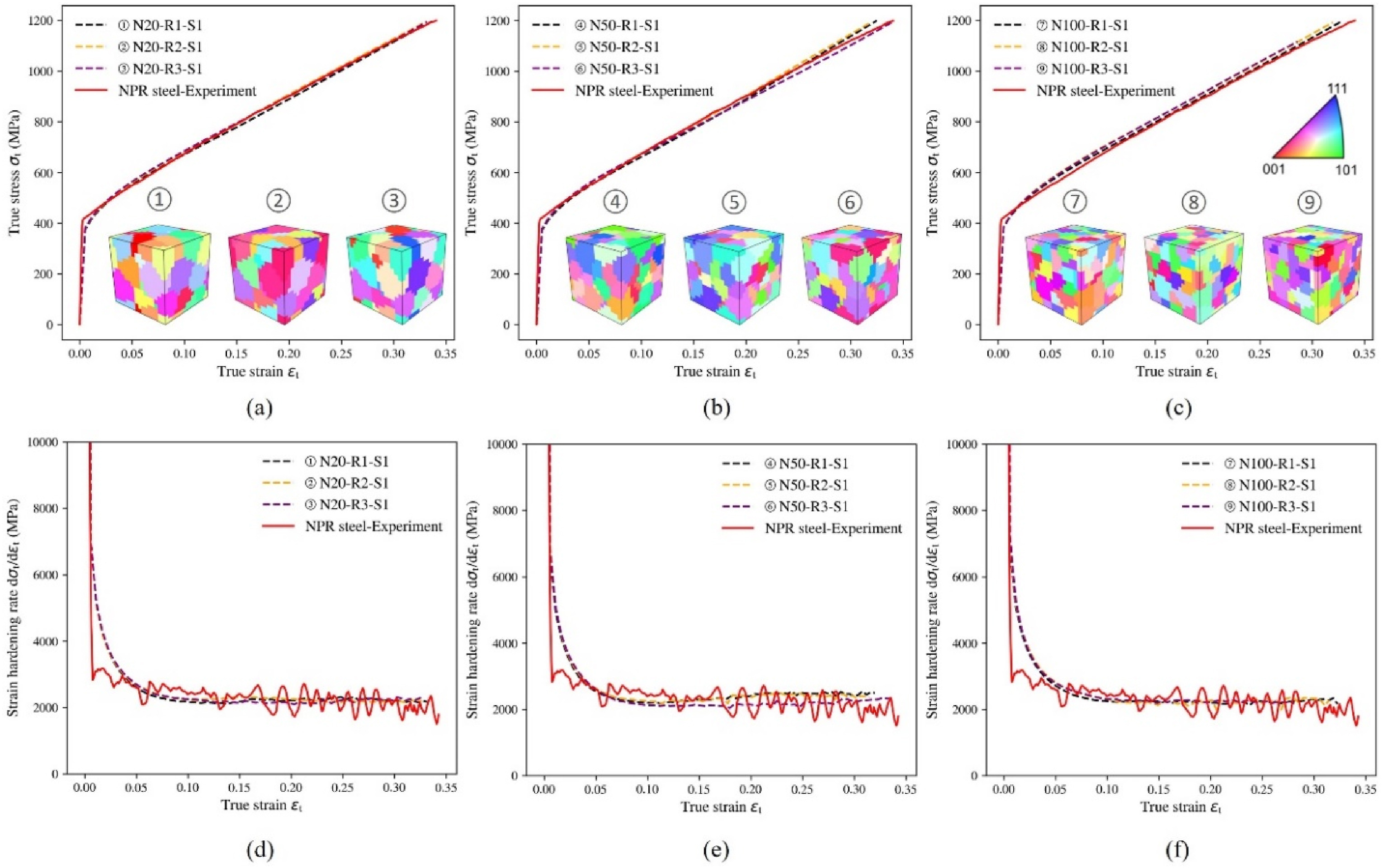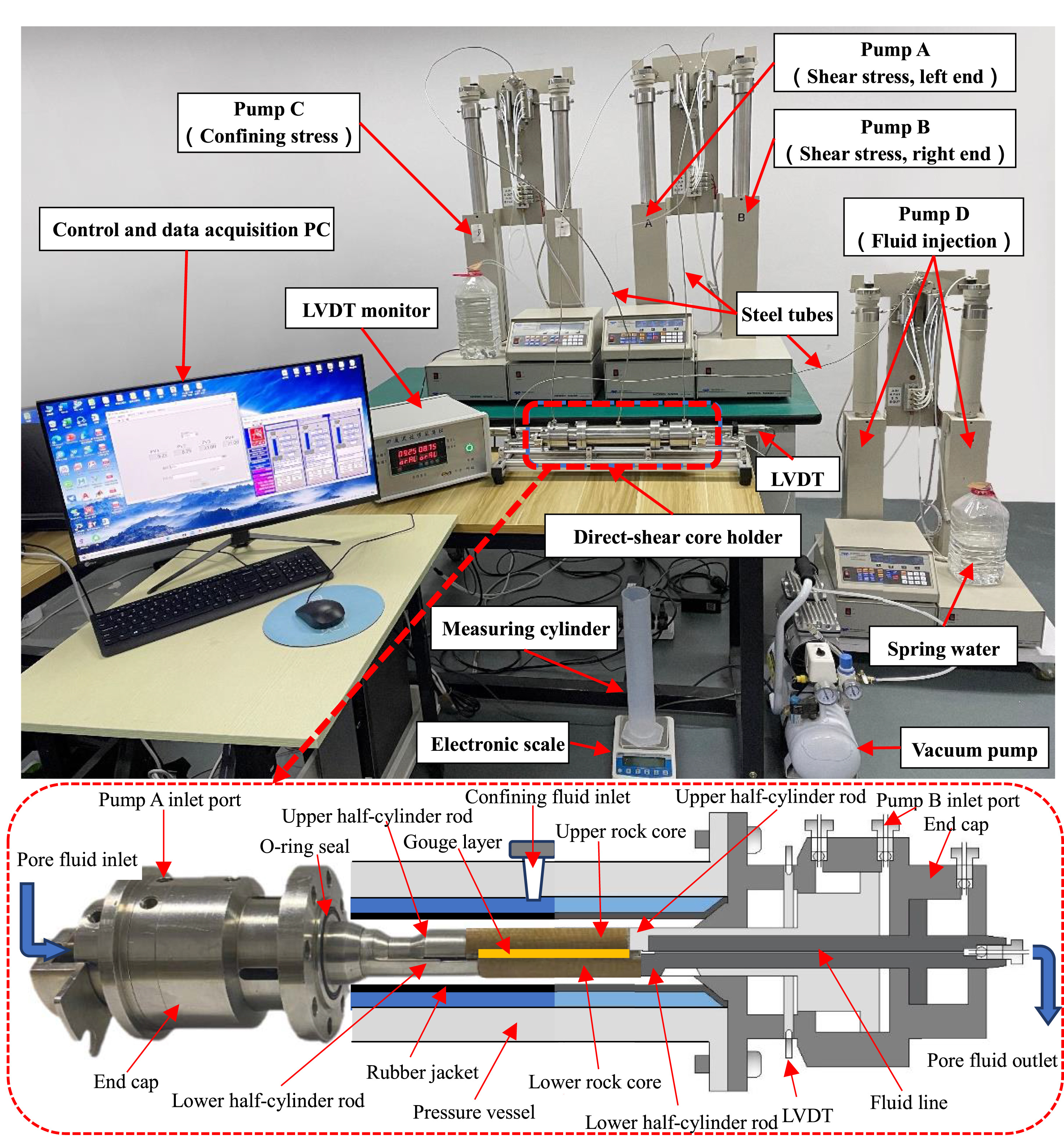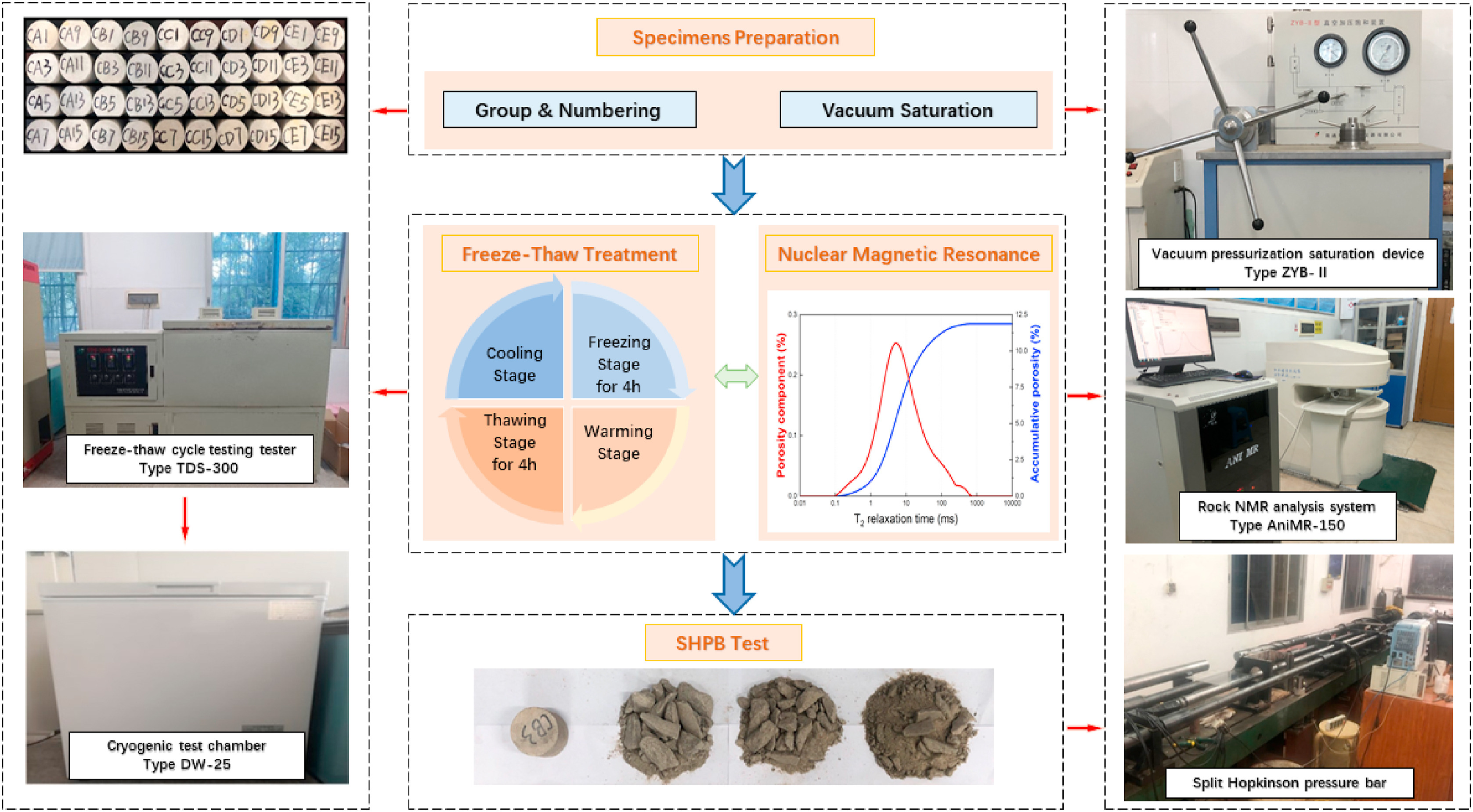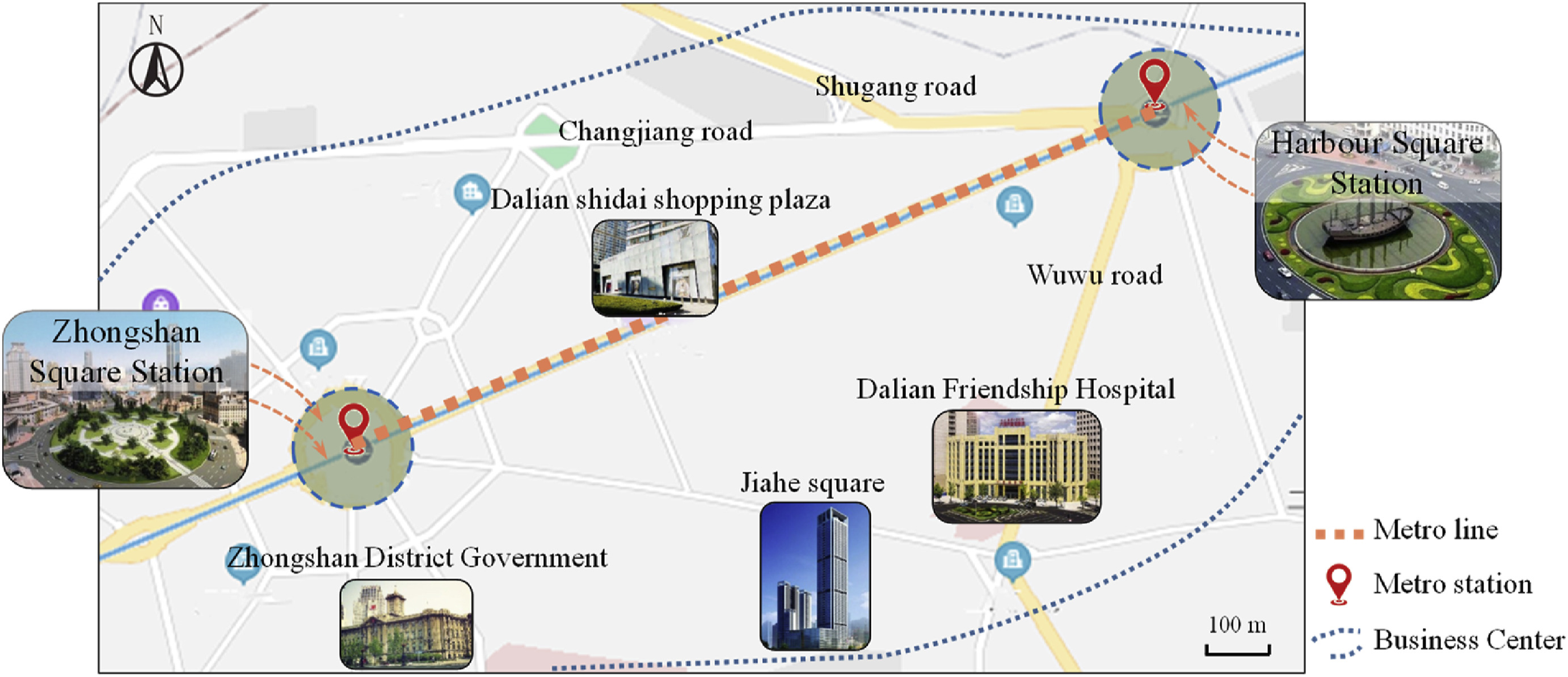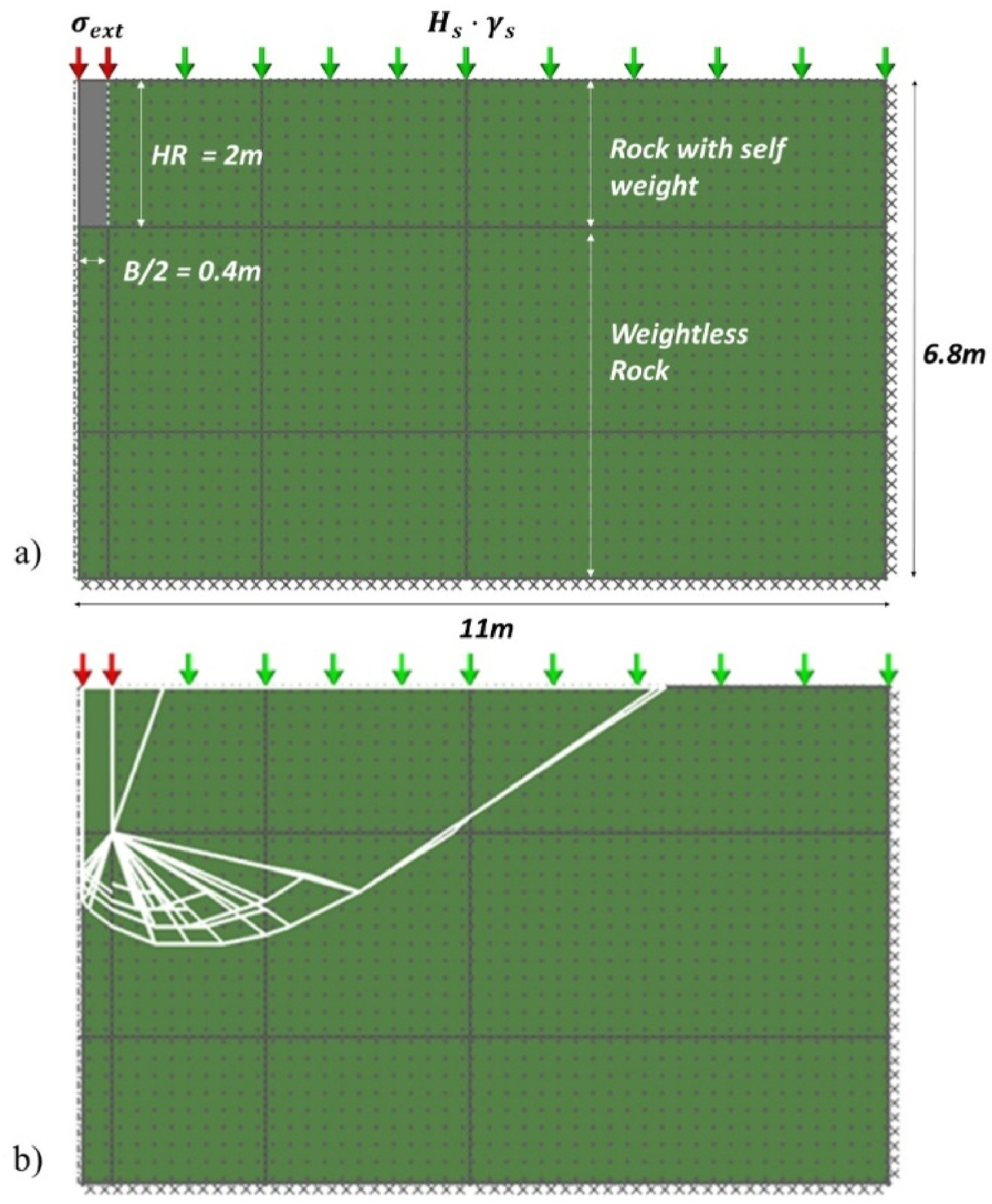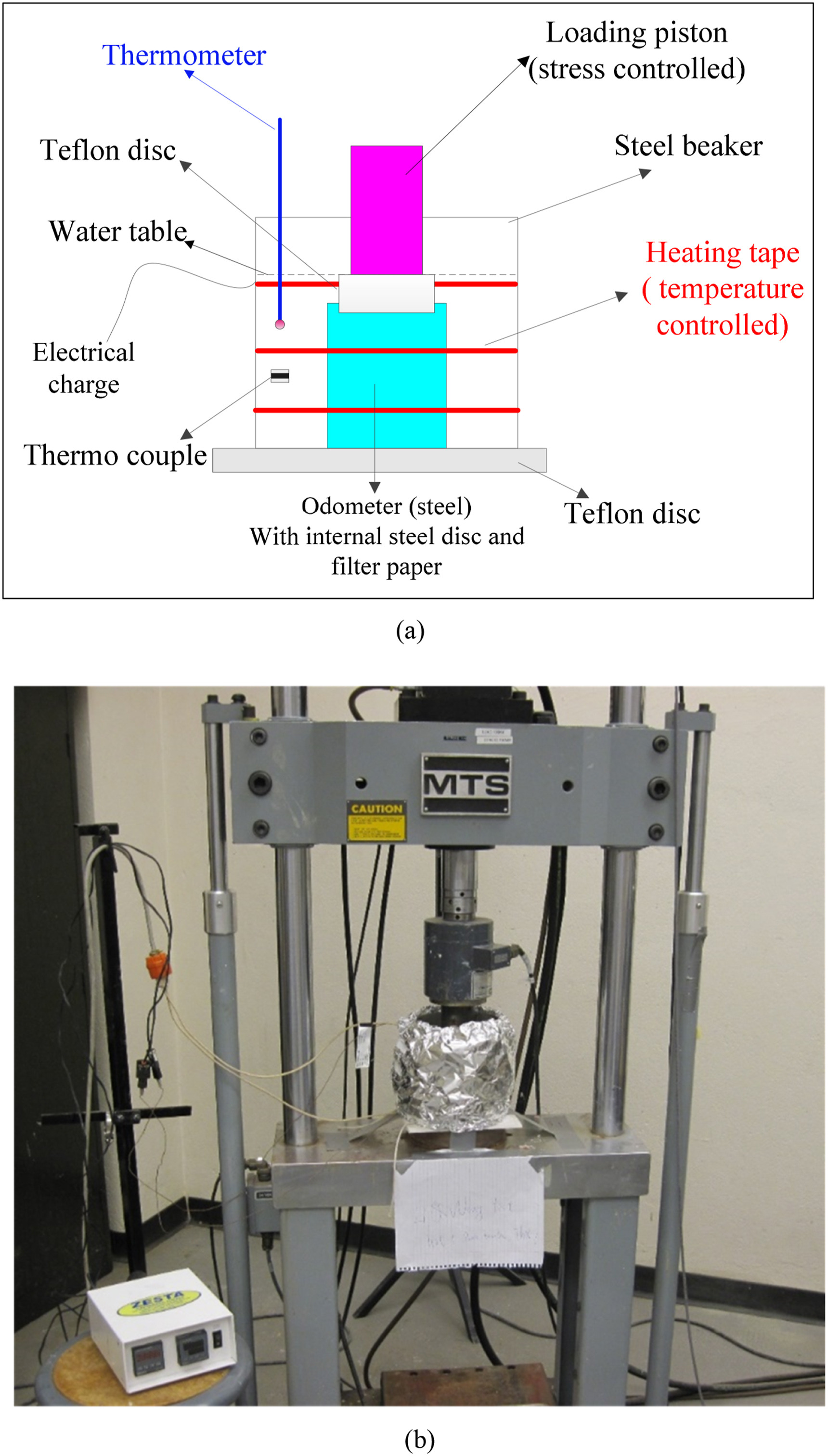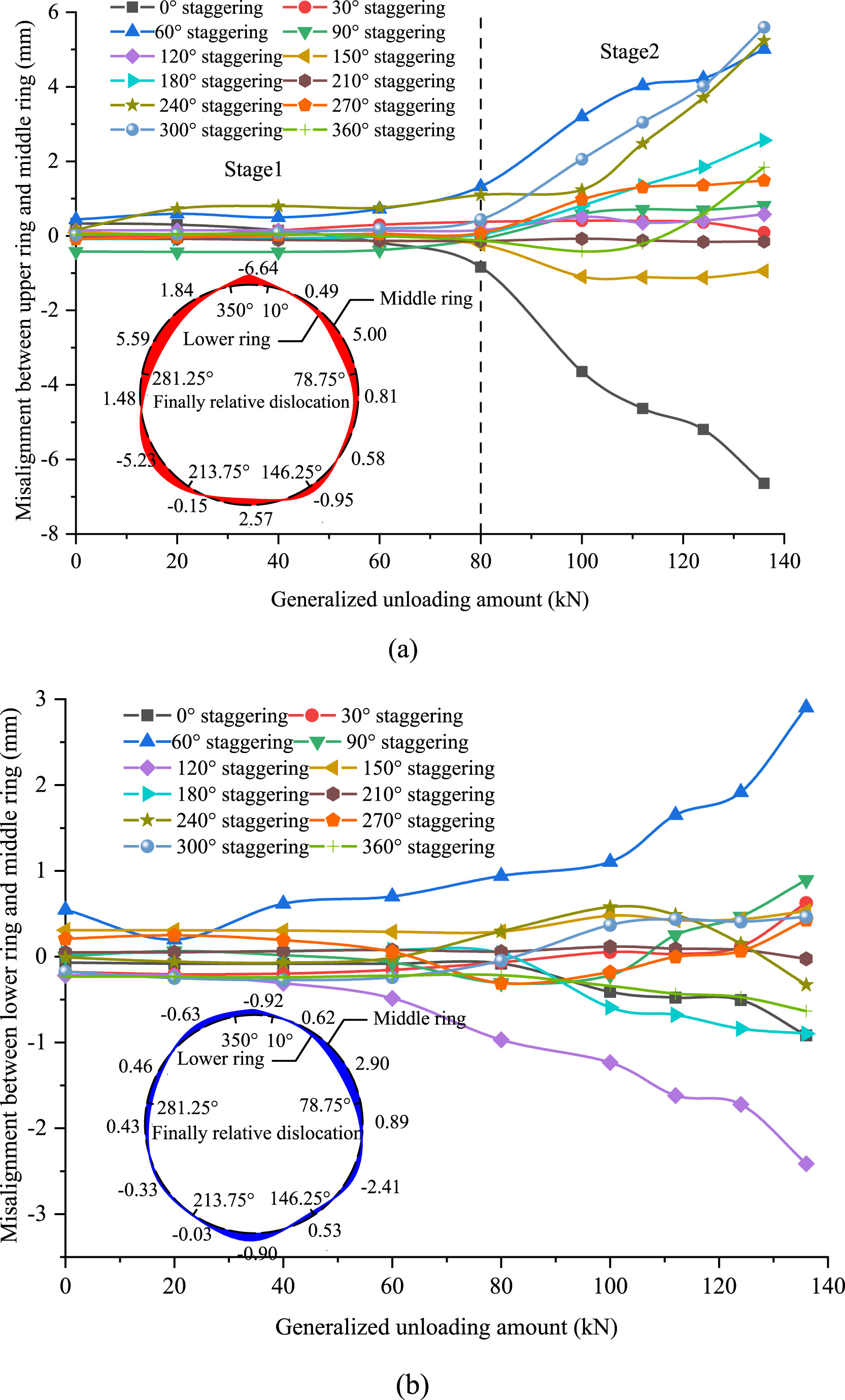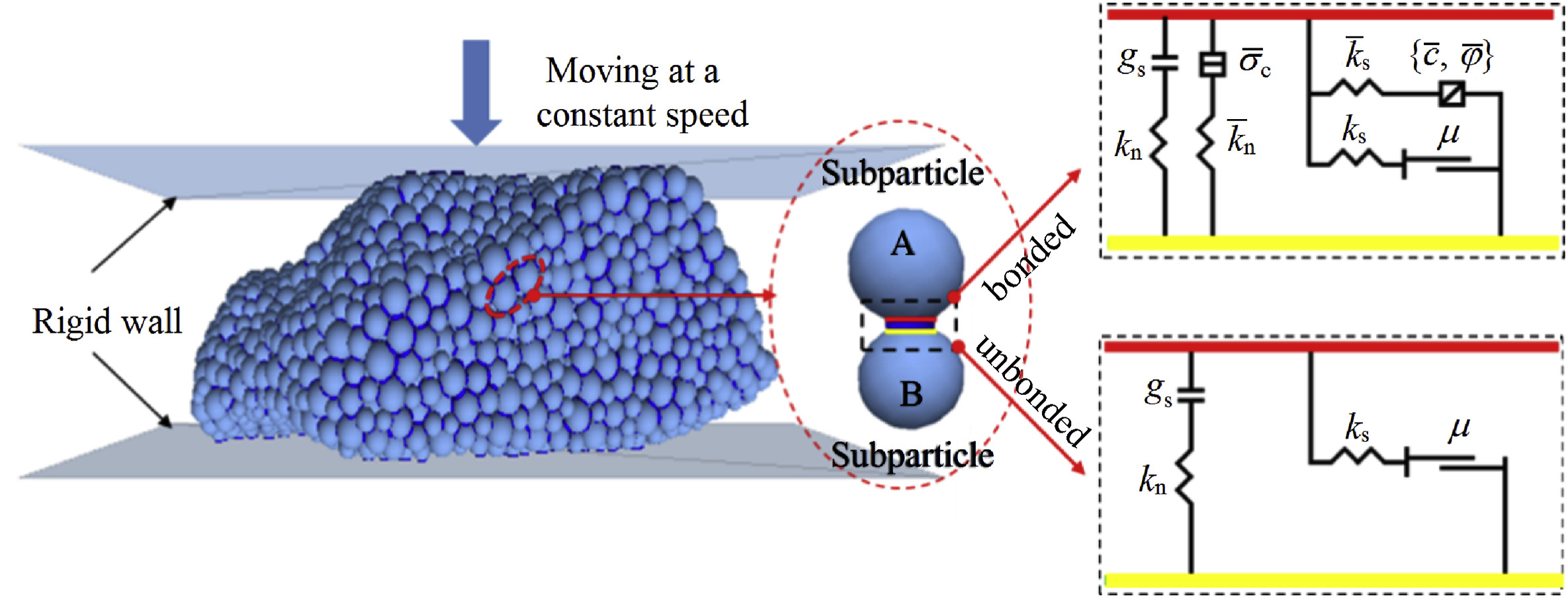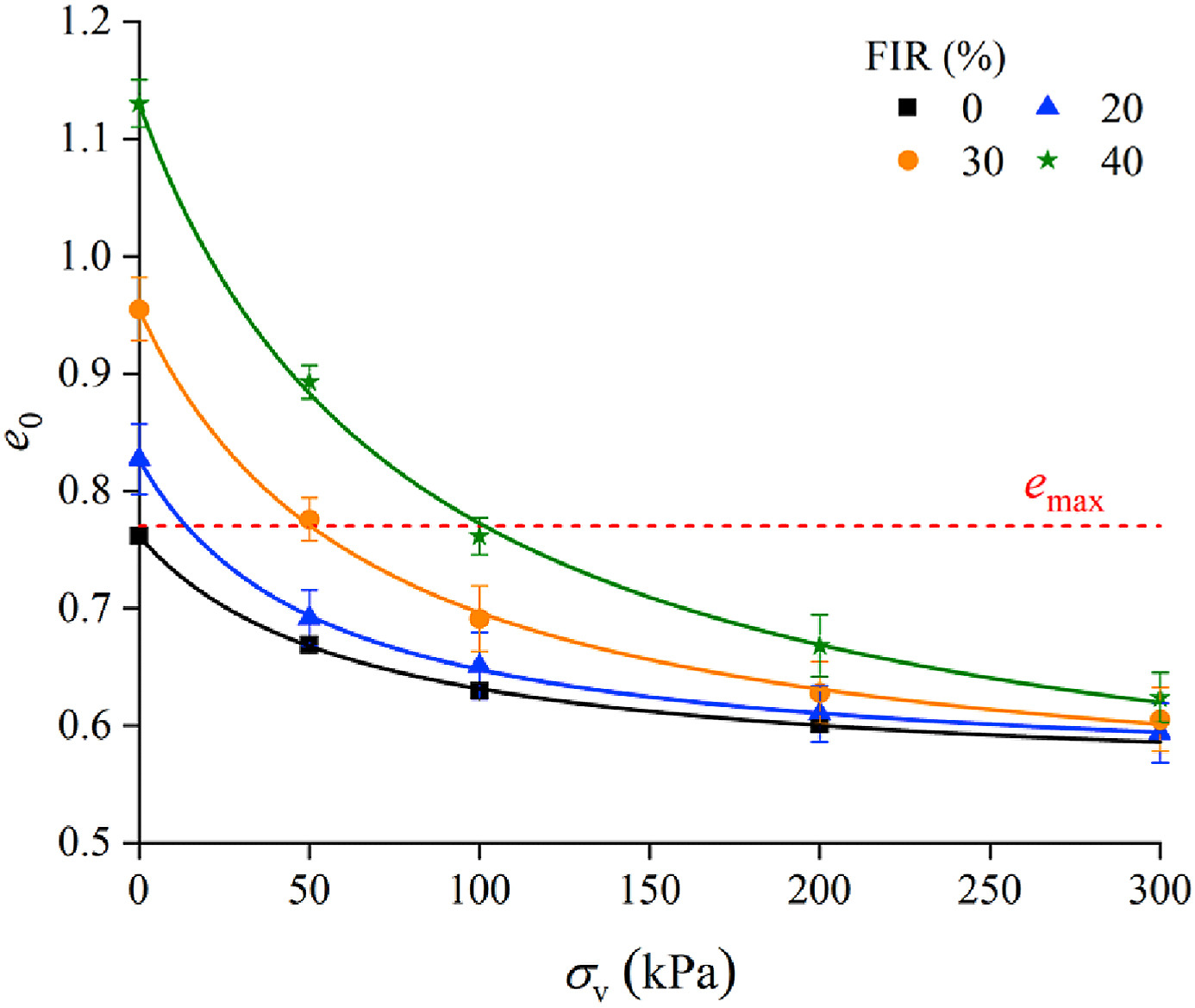-
Model test of negative Poisson's ratio cable for supporting super-large-span tunnel using excavation compensation method
Manchao He, Aipeng Guo, Zhifeng Du, Songyuan Liu, Chun Zhu, Shiding Cao, Zhigang Tao
2023, 15(6): 1355-1369. doi:10.1016/j.jrmge.2022.10.018
Abstract: In recent years, there is a scenario in urban tunnel constructions to build super-large-span tunnels for traffic diversion and route optimization purposes. However, the increased size makes tunnel support more difficult. Unfortunately, there are few studies on the failure and support mechanism of the surrounding rocks in the excavation of supported tunnel, while most model tests of super-large-span tunnels focus on tShow FiguresIn recent years, there is a scenario in urban tunnel constructions to build super-large-span tunnels for traffic diversion and route optimization purposes. However, the increased size makes tunnel support more difficult. Unfortunately, there are few studies on the failure and support mechanism of the surrounding rocks in the excavation of supported tunnel, while most model tests of super-large-span tunnels focus on the failure characteristics of surrounding rocks in tunnel excavation without supports. Based on excavation compensation method (ECM), model tests of a super-large-span tunnel excavation by different anchor cable support methods in the initial support stage were carried out. The results indicate that during excavation of super-large-span tunnel, the stress and displacement of the shallow surrounding rocks decrease, following a step-shape pattern, and the tunnel failure is mainly concentrated on the vault and spandrel areas. Compared with conventional anchor cable supports, the NPR (negative Poisson's ratio) anchor cable support is more suitable for the initial support stage of the super-large-span tunnels. The tunnel support theory, model test materials, methods, and the results obtained in this study could provide references for study of similar super-large-span tunnels.
[...]Read more. -
Assessment of cyclic deformation and critical stress amplitude of jointed rocks via cyclic triaxial testing
Waranga Habaraduwa Peellage, Behzad Fatahi, Haleh Rasekh
2023, 15(6): 1370-1390. doi:10.1016/j.jrmge.2023.02.001
Abstract: Jointed rock specimens with a natural replicated joint surface oriented at a mean dip angle of 60° were prepared, and a series of cyclic triaxial tests was performed at different confining pressures and cyclic deviatoric stress amplitudes. The samples were subjected to 10,000 loading-unloading cycles with a frequency of 8 Hz. At each level of confining pressure, the applied cyclic deviatoric stress amplitude wasShow FiguresJointed rock specimens with a natural replicated joint surface oriented at a mean dip angle of 60° were prepared, and a series of cyclic triaxial tests was performed at different confining pressures and cyclic deviatoric stress amplitudes. The samples were subjected to 10,000 loading-unloading cycles with a frequency of 8 Hz. At each level of confining pressure, the applied cyclic deviatoric stress amplitude was increased incrementally until excessive deformation of the jointed rock specimen was observed. Analysis of the test results indicated that there existed a critical cyclic deviatoric stress amplitude (i.e. critical dynamic deviatoric stress) beyond which the jointed rock specimens yielded. The measured critical dynamic deviatoric stress was less than the corresponding static deviatoric stress. At cyclic deviatoric stress amplitudes less than the critical dynamic deviatoric stress, minor cumulative residual axial strains were observed, resulting in hysteretic damping. However, for cyclic deviatoric stresses beyond the critical dynamic deviatoric stress, the plastic strains increased promptly, and the resilient moduli degraded rapidly during the initial loading cycles. Cyclic triaxial test results showed that at higher confining pressures, the ultimate residual axial strain attained by the jointed rock specimen decreased, the steady-state dissipated energy density and steady-state damping ratio per load cycle decreased, while steady-state resilient moduli increased.
[...]Read more. -
Estimation of fracture size and azimuth in the universal elliptical disc model based on trace information
Jichao Guo, Jun Zheng, Qing Lü, Jianhui Deng
2023, 15(6): 1391-1405. doi:10.1016/j.jrmge.2022.07.018
Abstract: The geometric characteristics of fractures within a rock mass can be inferred by the data sampling from boreholes or exposed surfaces. Recently, the universal elliptical disc (UED) model was developed to represent natural fractures, where the fracture is assumed to be an elliptical disc and the fracture orientation, rotation angle, length of the long axis and ratio of short-long axis lengths are considered as variablShow FiguresThe geometric characteristics of fractures within a rock mass can be inferred by the data sampling from boreholes or exposed surfaces. Recently, the universal elliptical disc (UED) model was developed to represent natural fractures, where the fracture is assumed to be an elliptical disc and the fracture orientation, rotation angle, length of the long axis and ratio of short-long axis lengths are considered as variables. This paper aims to estimate the fracture size- and azimuth-related parameters in the UED model based on the trace information from sampling windows. The stereological relationship between the trace length, size- and azimuth-related parameters of the UED model was established, and the formulae of the mean value and standard deviation of trace length were proposed. The proposed formulae were validated via the Monte Carlo simulations with less than 5% of error rate between the calculated and true values. With respect to the estimation of the size- and azimuth-related parameters using the trace length, an optimization method was developed based on the pre-assumed size and azimuth distribution forms. A hypothetical case study was designed to illustrate and verify the parameter estimation method, where three combinations of the sampling windows were used to estimate the parameters, and the results showed that the estimated values could agree well with the true values. Furthermore, a hypothetical three-dimensional (3D) elliptical fracture network was constructed, and the circular disc, non-UED and UED models were used to represent it. The simulated trace information from different models was compared, and the results clearly illustrated the superiority of the proposed UED model over the existing circular disc and non-UED models.
[...]Read more. -
A practical framework for performance-based reliability analysis of subway stations based on a fault–structure combined system
M. Ghorbanzadeh, M. Hajihassani, M. Kharghani
2023, 15(6): 1406-1425. doi:10.1016/j.jrmge.2022.09.012
Abstract: It is necessary to pay particular attention to the uncertainties that exist in an engineering problem to reduce the risk of seismic damage of infrastructures against natural hazards. Moreover, certain structural performance levels should be satisfied during strong earthquakes. However, these performance levels have been only well described for aboveground structures. This study investigates the main uncertainties invShow FiguresIt is necessary to pay particular attention to the uncertainties that exist in an engineering problem to reduce the risk of seismic damage of infrastructures against natural hazards. Moreover, certain structural performance levels should be satisfied during strong earthquakes. However, these performance levels have been only well described for aboveground structures. This study investigates the main uncertainties involved in the performance-based seismic analysis of a multi-story subway station. More than 100 pulse-like and no pulse-like ground motions have been selected. In this regard, an effective framework is presented, based on a set of nonlinear static and dynamic analyses performed by OpenSees code. The probabilistic seismic demand models for computing the free-field shear strain of soil and racking ratio of structure are proposed. These models result in less variability compared with existing relations, and make it possible to evaluate a wider range of uncertainties through reliability analysis in Rtx software using the Monte Carlo sampling method. This work is performed for three different structural performance levels (denoted as PL1–PL3). It is demonstrated that the error terms related to the magnitude and location of earthquake excitations and also the corresponding attenuation relationships have been the most important parameters. Therefore, using a fault–structure model would be inevitable for the reliability analysis of subway stations. It is found that the higher performance level (i.e. PL3) has more sensitivity to random variables than the others. In this condition, the pulse-like ground motions have a major contribution to the vulnerability of subway stations.
[...]Read more. -
Determination of rock mass integrity coefficient using a non-invasive geophysical approach
Muhammad Hasan, Yanjun Shang, Xuetao Yi, Peng Shao, Meng He
2023, 15(6): 1426-1440. doi:10.1016/j.jrmge.2022.07.008
Abstract: Determination of rock mechanical parameters is the most important step in rock mass quality evaluation and has significant impacts on geotechnical engineering practice. Rock mass integrity coefficient (KV) is one of the most efficient parameters, which is conventionally determined from boreholes. Such approaches, however, are time-consuming and expensive, offer low data coverage of point measurements, require heavy eShow FiguresDetermination of rock mechanical parameters is the most important step in rock mass quality evaluation and has significant impacts on geotechnical engineering practice. Rock mass integrity coefficient (KV) is one of the most efficient parameters, which is conventionally determined from boreholes. Such approaches, however, are time-consuming and expensive, offer low data coverage of point measurements, require heavy equipment, and are hardly conducted in steep topographic sites. Hence, borehole approaches cannot assess the subsurface thoroughly for rock mass quality evaluation. Alternatively, use of geophysical methods is non-invasive, rapid and economical. The proposed geophysical approach makes useful empirical correlation between geophysical and geotechnical parameters. We evaluated the rock mass quality via integration between KV measured from the limited boreholes and inverted resistivity obtained from electrical resistivity tomography (ERT). The borehole-ERT correlation provided KV along various geophysical profiles for more detailed 2D/3D (two-/three-dimensional) mapping of rock mass quality. The subsurface was thoroughly evaluated for rock masses with different engineering qualities, including highly weathered rock, semi-weathered rock, and fresh rock. Furthermore, ERT was integrated with induced polarization (IP) to resolve the uncertainty caused by water/clay content. Our results show that the proposed method, compared with the conventional approaches, can reduce the ambiguities caused by inadequate data, and give more accurate insights into the subsurface for rock mass quality evaluation.
[...]Read more. -
Energy absorption characteristics of novel high-strength and high-toughness steels used for rock support
Ding Wang, Manchao He, Liangjiu Jia, Xiaoming Sun, Min Xia, Xuchun Wang
2023, 15(6): 1441-1456. doi:10.1016/j.jrmge.2022.10.013
Abstract: Nowadays, the development of novel metallic materials for rock support have attracted research interests since they can significantly improve the deformation and energy absorption capacities of rock bolts. Although previous studies proved the importance and mechanical advantages of utilizing high-strength and high-toughness (HSHT) steels in rock support, there is no systematic analysis to reveal the essential energyShow FiguresNowadays, the development of novel metallic materials for rock support have attracted research interests since they can significantly improve the deformation and energy absorption capacities of rock bolts. Although previous studies proved the importance and mechanical advantages of utilizing high-strength and high-toughness (HSHT) steels in rock support, there is no systematic analysis to reveal the essential energy absorption parameter and the guidelines for further development of metallic rock support materials. This paper analyzes the energy absorption characteristics of novel HSHT steels (negative Poisson's ratio (NPR) and twinning-induced plasticity (TWIP) steels) in comparison with conventional rock support materials. A physically based crystal plasticity (CP) model was set up and calibrated to study the effect of strain hardening rate (SHR). Meanwhile, the roles of underlying physical mechanisms, i.e. the dislocation density and twin volume fraction, were studied. The results show that the improvement of energy absorption density (EAD) is essential for further development of rock support materials, besides the increase of energy absorption rate (EAR) for previous development of conventional rock support materials. The increase of EAD requires increases of both strength and deformation capacity of materials. For HSHT steels, the decrease of SHR has a positive effect on the improvement of EAD. In addition, the increase of EAD is followed by the increase of twin volume fraction and the decrease of plastic Poisson's ratio which can promote deformation plasticity of materials. Meanwhile, the increase of EAR is correlated with the accumulation of dislocation density, which can increase the strength of materials. This paper provides the theoretical basis and guidelines for developing rock support materials in deep underground engineering and other related fields.
[...]Read more. -
Experimental investigation on frictional properties of stressed basalt fractures
Zhen Zhong, Congqiang Xu, Lei Wang, Yunjin Hu, Fengshou Zhang
2023, 15(6): 1457-1475. doi:10.1016/j.jrmge.2022.12.020
Abstract: The frictional strength and sliding stability of faults are crucial in interpreting earthquake mechanisms and cycles. Herein, we report friction experiments on basalt fractures, using a self-designed triaxial apparatus that allows direct shear of samples under coupled hydro-mechanical conditions. Velocity-stepping (VS) and slide-hold-slide (SHS) experiments are performed on both bare and gouge-bearing surfaces of XiaShow FiguresThe frictional strength and sliding stability of faults are crucial in interpreting earthquake mechanisms and cycles. Herein, we report friction experiments on basalt fractures, using a self-designed triaxial apparatus that allows direct shear of samples under coupled hydro-mechanical conditions. Velocity-stepping (VS) and slide-hold-slide (SHS) experiments are performed on both bare and gouge-bearing surfaces of Xiashan basalt subjected to cyclic shear velocities at 1–30 μm/s, effective normal stresses of 1–5 MPa, and pore pressures of 70–300 kPa. The measured basalt friction coefficients are in the range of 0.67–0.74, which is sensitive to gouge thickness, normal stress, and water. Specifically, a reduction in friction coefficient is observed with an increment in gouge thickness, normal stress, and pore pressure. Based on the microscopic observation of the pre- and post-shearing sliding surfaces, this weakening effect in friction coefficient can be attributed to powder lubrication. Furthermore, the VS test results reveal predominantly velocity-strengthening behavior at investigated slip velocities, and this velocity strengthening behavior does not appear to be influenced by variations in normal stress, gouge thickness, and water. However, changes in sliding velocity and normal stress can lead to a shift between stable and unstable sliding. Specifically, stable sliding is favored by high sliding velocities and low normal stress applied in this study. Finally, we analyze the experimental data by calculating the rate-and-state parameters using the rate- and state-dependent friction (RSF) theory. Importantly, the calculated friction rate parameter (a-b) supports the velocity-strengthening behavior. Both frictional relaxation (Δμc) during hold periods and frictional healing (Δμ) upon re-shearing are linearly proportional to the logarithmic hold time, which may be attributed to the growth in true contact area with hold time. This study sheds light on the roles of sliding velocity, and gouge thickness in controlling frictional strength and stability of basalt fractures.
[...]Read more. -
Dynamic behaviors of water-saturated and frozen sandstone subjected to freeze-thaw cycles
Feng Gao, Cong Li, Xin Xiong, Yanan Zhang, Keping Zhou
2023, 15(6): 1476-1490. doi:10.1016/j.jrmge.2022.11.007
Abstract: In high-altitude cold areas, freeze-thaw (F-T) cycles induced by day-night and seasonal temperature changes cause numerous rock mass slope engineering disasters. To investigate the dynamic properties of rock in the natural environment of a high-altitude cold area, standard specimens were drilled from the slope of the Jiama copper mine in Tibet, and dynamic compression tests were performed on water-saturated and frozeShow FiguresIn high-altitude cold areas, freeze-thaw (F-T) cycles induced by day-night and seasonal temperature changes cause numerous rock mass slope engineering disasters. To investigate the dynamic properties of rock in the natural environment of a high-altitude cold area, standard specimens were drilled from the slope of the Jiama copper mine in Tibet, and dynamic compression tests were performed on water-saturated and frozen sandstone with different numbers of F-T cycles (0, 10, 20, 30, and 40) by the split Hopkinson pressure bar (SHPB) system with a cryogenic control system. The influence of water-saturated and frozen conditions on the dynamic performance of sandstone was investigated. The following conclusions are drawn: (1) With increasing strain rate, the attenuation factor (λa) of water-saturated sandstone and the intensifying factor (λi) of frozen sandstone linearly increase. As the number of F-T cycles increases, the dependence factor (λd) of water-saturated sandstone linearly decreases, whereas the λd of frozen sandstone linearly increases. (2) The prediction equation of the dynamic compressive strength of water-saturated and frozen sandstone is obtained, which can be used to predict the dynamic compressive strength of sandstone after various F-T cycles based on the strain rate. (3) The mesoscopic mechanism of water-saturated and frozen sandstone's dynamic compressive strength evolution is investigated. The water softening effect causes the dynamic compressive strength of water-saturated sandstone to decrease, whereas the strengthening effect of pore ice causes it to increase. (4) The decrease in the relative dynamic compressive strength of water-saturated sandstone and the increase in the relative dynamic compressive strength of frozen sandstone can be attributed to the increased porosity.
[...]Read more. -
Evaluation and prediction of earth pressure balance shield performance in complex rock strata: A case study in Dalian, China
Xiang Shen, Dajun Yuan, Xing-Tao Lin, Xiangsheng Chen, Yuansheng Peng
2023, 15(6): 1491-1505. doi:10.1016/j.jrmge.2022.09.010
Abstract: This research explores the potential for the evaluation and prediction of earth pressure balance shield performance based on a gray system model. The research focuses on a shield tunnel excavated for Metro Line 2 in Dalian, China. Due to the large error between the initial geological exploration data and real strata, the project construction is extremely difficult. In view of the current situation regarding the projeShow FiguresThis research explores the potential for the evaluation and prediction of earth pressure balance shield performance based on a gray system model. The research focuses on a shield tunnel excavated for Metro Line 2 in Dalian, China. Due to the large error between the initial geological exploration data and real strata, the project construction is extremely difficult. In view of the current situation regarding the project, a quantitative method for evaluating the tunneling efficiency was proposed using cutterhead rotation (R), advance speed (S), total thrust (F) and torque (T). A total of 80 datasets with three input parameters and one output variable (F or T) were collected from this project, and a prediction framework based gray system model was established. Based on the prediction model, five prediction schemes were set up. Through error analysis, the optimal prediction scheme was obtained from the five schemes. The parametric investigation performed indicates that the relationships between F and the three input variables in the gray system model harmonize with the theoretical explanation. The case shows that the shield tunneling performance and efficiency are improved by the tunneling parameter prediction model based on the gray system model.
[...]Read more. -
Revisiting the analytical solutions for ultimate bearing capacity of pile embedded in rocks
A. Picardo, M.A. Millán, R. Galindo, A. Alencar
2023, 15(6): 1506-1519. doi:10.1016/j.jrmge.2022.11.012
Abstract: This paper investigates the validity and shortcomings of the existing analytical solution for the ultimate bearing capacity of a pile embedded in a rock mass using the modified Hoek–Brown failure criterion. Although this criterion is considered a reference value for empirical and numerical calculations, some limitations of its basic simplifications have not been clarified yet. This research compares the analytiShow FiguresThis paper investigates the validity and shortcomings of the existing analytical solution for the ultimate bearing capacity of a pile embedded in a rock mass using the modified Hoek–Brown failure criterion. Although this criterion is considered a reference value for empirical and numerical calculations, some limitations of its basic simplifications have not been clarified yet. This research compares the analytical results obtained from the novel discontinuity layout optimization (DLO) method and the numerical solutions from the finite difference method (FDM). The limitations of the analytical solution are considered by comparing different DLO failure modes, thus allowing for the first time a critical evaluation of its scope and conditioning for implementation. Errors of up to 40% in the bearing capacity and unrealistic failure modes are the main issues in the analytical solution. The main aspects of the DLO method are also analyzed with an emphasis on the linearization of the rock failure criterion and the accuracy resulting from the discretization size. The analysis demonstrates DLO as a very efficient and accurate tool to address the pile tip bearing capacity, presenting considerable advantages over other methods.
[...]Read more. -
Modeling pipe-soil interaction under vertical downward relative offset using B-spline material point method
Chunxin Zhang, Honghu Zhu, Haojie Li
2023, 15(6): 1520-1534. doi:10.1016/j.jrmge.2022.07.010
Abstract: To analyze the pipeline response under permanent ground deformation, the evolution of resistance acting on the pipe during the vertical downward offset is an essential ingredient. However, the efficient simulation of pipe penetration into soil is challenging for the conventional finite element (FE) method due to the large deformation of the surrounding soils. In this study, the B-spline material point method (MPM) isShow FiguresTo analyze the pipeline response under permanent ground deformation, the evolution of resistance acting on the pipe during the vertical downward offset is an essential ingredient. However, the efficient simulation of pipe penetration into soil is challenging for the conventional finite element (FE) method due to the large deformation of the surrounding soils. In this study, the B-spline material point method (MPM) is employed to investigate the pipe-soil interaction during the downward movement of rigid pipes buried in medium and dense sand. To describe the density- and stress-dependent behaviors of sand, the J2-deformation type model with state-dependent dilatancy is adopted. The effectiveness of the model is demonstrated by element tests and biaxial compression tests. Afterwards, the pipe penetration process is simulated, and the numerical outcomes are compared with the physical model tests. The effects of pipe size and burial depth are investigated with an emphasis on the mobilization of the soil resistance and the failure mechanisms. The simulation results indicate that the bearing capacity formulas given in the guidelines can provide essentially reasonable estimates for the ultimate force acting on buried pipes, and the recommended value of yield displacement may be underestimated to a certain extent.
[...]Read more. -
A thermodynamic-based model for modeling thermo-elastoplastic behaviors of saturated clayey soils considering bound water dehydration
Mohammadhossein Sojoudi, Biao Li
2023, 15(6): 1535-1546. doi:10.1016/j.jrmge.2022.09.008
Abstract: The non-isothermal deformation of soft mudrocks or clay soils is one of the most critical issues in energy and environmental related geotechnics. Clay-related geomaterials hold complex microstructure and mineral composition, which brings difficulty in investigating their thermo-mechanical behaviors. Previous studies pay little attention to the difference between a thermal plastic strain and the strain from clay dehydShow FiguresThe non-isothermal deformation of soft mudrocks or clay soils is one of the most critical issues in energy and environmental related geotechnics. Clay-related geomaterials hold complex microstructure and mineral composition, which brings difficulty in investigating their thermo-mechanical behaviors. Previous studies pay little attention to the difference between a thermal plastic strain and the strain from clay dehydration. In this study, a new constitutive model is proposed for describing the thermo-elastoplastic behaviors of clayey soils under water-saturated condition. The effect of temperature variation and mechanical loading on elastoplastic strains and dehydration are investigated. The thermodynamics laws and the unconventional plasticity are applied to quantify the thermo-mechanical behavior. The irreversible strain is captured by using Cam-Clay plasticity and subloading yield surface concept. The dehydration strain is described by utilizing a novel method based on generalized thermodynamics approach and Helmholtz free energy function. The internal variables, and the first and second laws of thermodynamics are applied in the model. The hardening rule is established by implementing the laws of physical conservation, energy dissipation, and plastic flow. The proposed model is validated using specially designed thermal consolidation tests on laboratory prepared heavily consolidated clayey soils and some published data of clayey soils with different geological origins.
[...]Read more. -
Mechanical performances of shield tunnel segments under asymmetric unloading induced by pit excavation
Gang Wei, Feifan Feng, Chengbao Hu, Jiaxuan Zhu, Xiao Wang
2023, 15(6): 1547-1564. doi:10.1016/j.jrmge.2022.08.010
Abstract: To explore the stress and deformation responses, as well as the failure characteristics of the shield tunnel segment of Hangzhou Metro under the influences of pit excavation and other surrounding projects, a self-developed “shield tunnel segment hydraulic loading system” was used to carry out full-scale loading tests on the three-ring staggered assembled segments. The structural performances and failure pShow FiguresTo explore the stress and deformation responses, as well as the failure characteristics of the shield tunnel segment of Hangzhou Metro under the influences of pit excavation and other surrounding projects, a self-developed “shield tunnel segment hydraulic loading system” was used to carry out full-scale loading tests on the three-ring staggered assembled segments. The structural performances and failure process of the tunnel segment under step-by-step asymmetric unloading were studied. A safety index was proposed to describe the bearing capacity of the segment. Next, a finite element model (FEM) was established to analyze the bearing capacity of segment using the test results. Finally, the effect of reinforcement with a steel plate on the deformation and bearing capacity of the segment was analyzed. The results showed that under asymmetric unloading, the peak value and amplitude of the bending moment on the near unloading side converged with a greater value than those on the far side. The concrete internal force exhibited a directional transformation at different load stages. Cracks first appeared at the 180° inner arc surface of the bottom standard block and then expanded to both sides, while the rate of crack propagation of the outer arc surface was relatively lower. The bearing capacity of the segments can be evaluated by the combination of the factors, e.g. the residual bearing capacity coefficient, moment transfer coefficient, and characterization coefficient. The segments approaching failure can facilitate the increase in the residual bearing capacity coefficient by more than 50%. This can provide guidance for the service assessment of metro tunnel operations.
[...]Read more. -
Coupling effects of morphology and inner pore distribution on the mechanical response of calcareous sand particles
Xin Li, Yaru Lv, Yuchen Su, Kunhang Zou, Yuan Wang, Wenxiong Huang
2023, 15(6): 1565-1579. doi:10.1016/j.jrmge.2022.09.017
Abstract: Calcareous sand is typically known as a problematic marine sediment because of its diverse morphology and complex inner pore structure. However, the coupling effects of morphology and inner pores on the mechanical properties of calcareous sand particles have rarely been investigated and understood. In this study, apparent contours and internal pore distributions of calcareous sand particles were obtained by three-dimShow FiguresCalcareous sand is typically known as a problematic marine sediment because of its diverse morphology and complex inner pore structure. However, the coupling effects of morphology and inner pores on the mechanical properties of calcareous sand particles have rarely been investigated and understood. In this study, apparent contours and internal pore distributions of calcareous sand particles were obtained by three-dimensional (3D) scanning imaging and X-ray micro-computed tomography (X-μCT), respectively. It was revealed that calcareous sand particles with different outer morphologies have different porosities and inner pore distributions because of their original sources and particle transport processes. In addition, a total of 120 photo-related compression tests and 492 3D discrete element simulations of four specific shaped particles, i.e. bulky, angular, dendritic and flaky, with variations in the inner pore distribution were conducted. The macroscopic particle strength and Weibull modulus obtained from the physical tests are not positively correlated with the porosity or regularity in shape, indicating the existence of coupling effect of particle shape and pore distribution. The shape effect on the particle strength first increases with the porosity and then decreases. The particle crushing of relatively regular particles is governed by the porosity, but that of extremely irregular particles is governed by the particle shape. The particle strength increases with the uniformity of the pore distribution. Particle fragmentation is mainly dependant on tensile bond strength, and the degree of tensile failure is considerably impacted by the particle shape but limited by the pore distribution.
[...]Read more. -
Groutability classification of granular soils with cement grouts
Hadi Farhadian, Zeynab Maleki
2023, 15(6): 1580-1590. doi:10.1016/j.jrmge.2022.09.007
Abstract: This research aims to develop a methodology for applying the geostatistical method to generate a groutability classification for granular soils. To ensure the precision of the suggested technique, a total of 103 data samples were used. Predicting the groutability of granular soils has always been difficult because of many soil characteristics. As a result, a new two-dimensional graph, the groutability classificationShow FiguresThis research aims to develop a methodology for applying the geostatistical method to generate a groutability classification for granular soils. To ensure the precision of the suggested technique, a total of 103 data samples were used. Predicting the groutability of granular soils has always been difficult because of many soil characteristics. As a result, a new two-dimensional graph, the groutability classification of granular soil (GCS) chart, was developed. GCS establishment was based on data analysis of the grain size of soil and cement-based grouts (N1 and N2), relative density (Dr) and fines content of the soil (FC), water/cement ratio of grout mixture (w/c), and grouting pressure (P), all of which have a direct impact on the groutability of soil media. The geostatistical method was used to develop and compile the GCS graph based on the aforementioned parameters with the use of coefficient S, which is a coefficient of the scoring set of parameters including P, w/c, Dr, and FC. The validation process was carried out hierarchically, with an additional set of 30 data. The proposed method has a prediction accuracy of roughly 96.7%, demonstrating a helpful tool. The proposed approach can be easily implemented in practical engineering situations because it has a comparable syntax to commonly used formulae. It should be noted that the proposed formula was only tested using the data samples collected, and the applicability of the produced procedure to other situations requires more examination.
[...]Read more. -
Undrained vane shear strength of sand-foam mixtures subjected to different shear rates
Jiazheng Zhong, Shuying Wang, Tongming Qu
2023, 15(6): 1591-1602. doi:10.1016/j.jrmge.2022.11.002
Abstract: The shear strength of sand-foam mixtures plays a crucial role in ensuring successful earth pressure balance (EPB) shield tunneling. Since the sand-foam mixtures are constantly sheared by the cutterhead and the screw conveyor with varied rotation speeds during tunneling, it is non-trivial to investigate the effect of shear rates on the undrained shear strength of sand-foam mixtures under chamber pressures to extend thShow FiguresThe shear strength of sand-foam mixtures plays a crucial role in ensuring successful earth pressure balance (EPB) shield tunneling. Since the sand-foam mixtures are constantly sheared by the cutterhead and the screw conveyor with varied rotation speeds during tunneling, it is non-trivial to investigate the effect of shear rates on the undrained shear strength of sand-foam mixtures under chamber pressures to extend the understanding on the tunneling process. This study conducted a series of pressurized vane shear tests to investigate the role of shear rates on the peak and residual strengths of sand-foam mixtures at different pore states. Different from the shear-rate characteristics of natural sands or clay, the results showed that the peak strength of sand-foam mixtures under high vertical total stress (σv ≥ 200 kPa) and low foam injection ratio (FIR ≤ 30%) decreased with the increase in shear rate. Otherwise, the peak strength was not measurably affected by shear rates. The sand-foam mixtures in the residual state resembled low-viscous fluid with yield stress and the residual strength increased slightly with shear rates. In addition, the peak and residual strengths were approximately linear with vertical effective stress regardless of the total stress and FIR. The peak effective internal friction angle remained almost invariant in a low shear rate (γ˙ < 0.25 s−1) but decreased when the shear rate continued increasing. The residual effective internal friction angle was lower than the peak counterpart and insensitive to shear rates. This study unveiled the role of shear rates in the undrained shear strength of sand-foam mixtures with various FIRs and vertical total stresses. The findings can extend the understanding of the rate-dependent shear characteristics of conditioned soils and guide the decision-making of soil conditioning schemes in the EPB shield tunneling practice.
[...]Read more. -
Two-dimensional plane strain consolidation of unsaturated soils considering the depth-dependent stress
Lei Wang, Sidong Shen, Tianyi Li, Minjie Wen, Annan Zhou
2023, 15(6): 1603-1614. doi:10.1016/j.jrmge.2022.08.011
Abstract: In practical engineering, the total vertical stress in the soil layer is not constant due to stress diffusion, and varies with time and depth. Therefore, the purpose of this paper is to investigate the effect of stress diffusion on the two-dimensional (2D) plane strain consolidation properties of unsaturated soils when the stress varies with time and depth. A series of semi-analytical solutions in terms of excess porShow FiguresIn practical engineering, the total vertical stress in the soil layer is not constant due to stress diffusion, and varies with time and depth. Therefore, the purpose of this paper is to investigate the effect of stress diffusion on the two-dimensional (2D) plane strain consolidation properties of unsaturated soils when the stress varies with time and depth. A series of semi-analytical solutions in terms of excess pore air and water pressures and settlement for 2D plane strain consolidation of unsaturated soils can be derived with the joint use of Laplace transform and Fourier sine series expansion. Then, the inverse Laplace transform of the semi-analytical solution is given in the time domain using a self-programmed code based on Crump's method. The reliability of the obtained solutions is proved by the degeneration. Finally, the 2D plots of excess pore pressures and the curves of settlement varying with time, considering different physical parameters of unsaturated soil stratum and depth-dependent stress, are depicted and analyzed to study the 2D plane strain consolidation properties of unsaturated soils subjected to the depth-dependent stress.
[...]Read more. -
Revisiting factors contributing to the strength of cemented backfill support system: A review
N.M. Chiloane, F.K. Mulenga
2023, 15(6): 1615-1624. doi:10.1016/j.jrmge.2022.07.007
Abstract: This paper provides a review of the intrinsic and extrinsic factors affecting the uniaxial compressive strength (UCS) of cemented tailings backfill (CTB). The consideration is that once CTB is poured into underground stopes, its strength is heavily influenced by factors internal to the CTB as well as the surrounding mining environments. Peer-reviewed journal articles, books, and conference papers published between 20Show FiguresThis paper provides a review of the intrinsic and extrinsic factors affecting the uniaxial compressive strength (UCS) of cemented tailings backfill (CTB). The consideration is that once CTB is poured into underground stopes, its strength is heavily influenced by factors internal to the CTB as well as the surrounding mining environments. Peer-reviewed journal articles, books, and conference papers published between 2000 and 2022 were searched electronically from various databases and reviewed. Additional sources, such as doctoral theses, were obtained from academic repositories. An important finding from the review is that the addition of fibers was reported to improve the UCS of CTB in some studies while decrease in others. This discrepancy was accounted to the different properties of fibers used. Further research is therefore needed to determine the “preferred” fiber to be used in CTB. Diverging findings were also reported on the effects of stope size on the UCS of CTB. Furthermore, the use of fly ash as an alternative binder may be threatened in the future when reliance on the coal power declines. Therefore, an alternative cementitious by-product to be used together with furnace slag may be required in the future. Finally, while most studies on backfill focused on single-layered structures, layered backfill design models should also be investigated.
[...]Read more.

